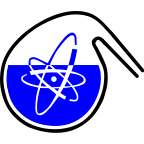Radium is the heaviest alkaline-earth metal. It has no stable isotopes and the most long-lived and abundant isotope is Ra with a half-life of 1600 years. Radium and its short-lived daughters are among the most radiotoxic elements. Enhanced radium concentrations can be found in different waste streams: uranium and other metal mining, fossil fuel combustion, oil and gas production among others. Moreover, radium ingrowths occur in spent nuclear fuel, which makes it a critical element for long-term safety assessment of final nuclear waste repositories [1]. One of the main factors controlling radium migration in the environment is its co-precipitation with other alkaline-metal sulfate phases, for example barite (BaSO). In some natural sulfate free waters, radium mobility can be controlled by its co-precipitation with carbonate minerals, for example, witherite (BaCO) [2]. The mechanism and degree of radium co-precipitation with barite and witherite depends mainly on crystal structure and the solubilities of pure barite, witherite, RaSO and RaCO. The crystal structure and solubility of barite, witherite and other non-radioactive alkaline-earth metal sulfate and carbonate phases are well established, but little is known about the properties of RaSO and RaCO. The objective of this work was to study the crystal structures and solubilities of radium-barium sulfate and carbonate and obtain more insight into radium co-precipitation mechanisms and the migration of radium in the environment.
For this purpose, an old radium source was disassembled to obtain radium-barium sulfate (RaBaSO). Radium-barium carbonate (RaBaCO) was synthesized from the RaBaSO obtained by three cycles of RaBaSO heating in 1.5 mol·L NaCO up to 85 °C, cooling and subsequent removal of supernatant [3]. The RaBaSO obtained was characterized by an X-ray Diffraction (XRD) technique. Rietveld refinement showed that RaBaSO crystallizes in the Pnma (62) space group and is isostructural with pure barite (BaSO). Density Functional Theory (DFT) and Vegard’s law were used to obtain atomic coordinates and unit cell parameters of pure RaSO (a=9.129(8), b=5.538(3), c=7.313(5)) [4]. The synthesized RaBaCO was characterized by XRD and Extended X-Ray Absorption Fine Structure (EXAFS) techniques. EXAFS refinement indicated that radium is nine-coordinate in solid RaBaCO with a mean Ra-O bond distance of 2.885(5) Å. Comparison of the RaBaCO and witherite (BaCO) XRD patterns showed these solids are not isostructural.
The solubilities of RaBaSO and RaBaCO were measured from over- and undersaturation as a function of ionic strength (NaCl media). The concentration of radium was measured by gamma spectrometry after separation of the aqueous phase from colloids using ultracentrifugation to calculate its concentration and the apparent solubility product. The extended specific ion interaction theory (ESIT) was used to extrapolate the apparent solubility product of RaBaSO and RaBaCO to zero ionic strength and obtain the Ra - Cl ion interaction coefficients. It was shown that the apparent solubility products of RaBaSO and BaSO as well as those of RaBaCO and BaCO increase almost identically from zero ionic strength with an increase in the ionic strength of NaCl which indicates that Ra and Ba undergo similar short-range interactions with Cl in aqueous media as might be expected given the similar ionic radii of Ba and Ra. The solubility of RaBaSO at zero ionic strength is a little lower (0.2 log units) than the solubility of pure barite (BaSO). The results reveal that both the solubility and crystal structure of RaBaSO is very similar to the solubility and crystal structure of barite and that radium and barium form an ideal solid solution in the sulfate phase. The solubility of RaBaCO at zero ionic strength is significally higher (1 log unit) than the solubility of pure witherite (BaCO). This confirms that RaBaCO and pure RaCO are not isostructural with witherite (BaCO).
[1] Grandia, F., Merino, J., & Amphos, J. B. (2008). Assessment of the radium-barium co-precipitation and its potential influence on the solubility of Ra in the near-field. Stockholm, Sweden: SKB.
[2] Langmuir, D., & Riese, A. C. (1985). The thermodynamic properties of radium. Geochimica et cosmochimica acta, 49(7), 1593-1601.
[3] Matyskin, A. V., Ebin, B., Tyumentsev, M., Allard, S., Skarnemark, G., Ramebäck, H., & Ekberg, C. (2016). Disassembly of old radium sources and conversion of radium sulfate into radium carbonate for subsequent dissolution in acid. Journal of Radioanalytical and Nuclear Chemistry, 310(2), 589-595.
[4] Matyskin, A. V., Ylmen, R., Lagerkvist, P., Ramebäck, H., & Ekberg, C. (2017). Crystal structure of radium sulfate: an X-ray powder diffraction and density functional theory study. Journal of Solid State Chemistry, 253, 15-20.

